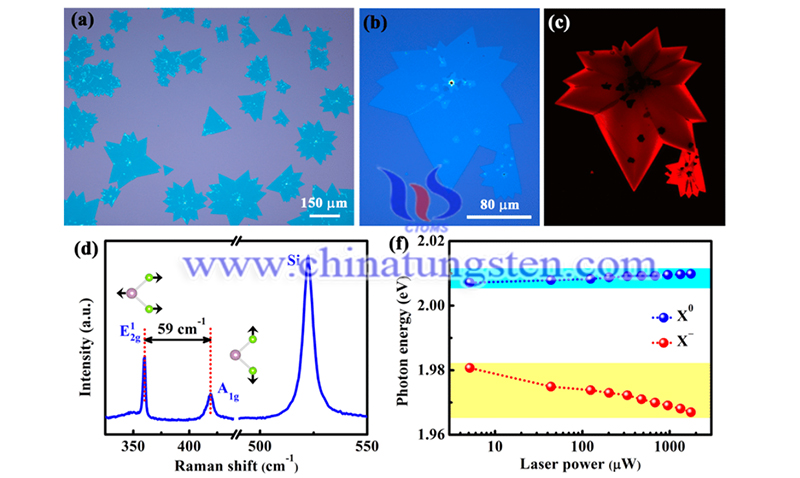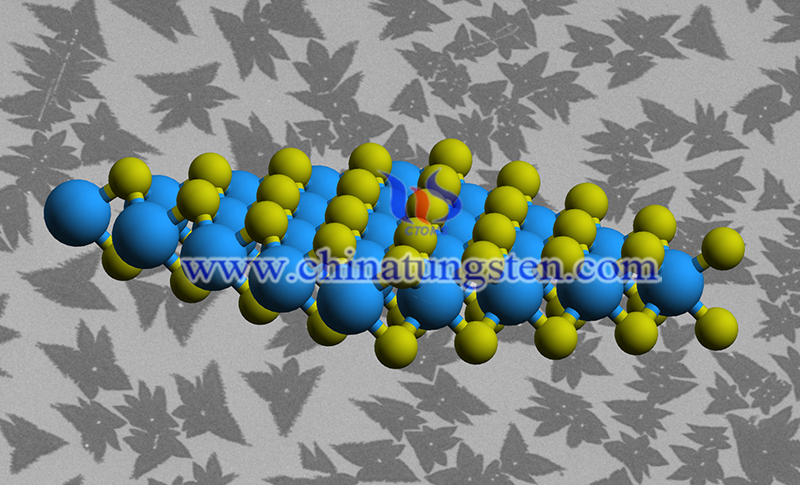Tungsten Disulfide Used to Produce Valley-Coherent Photoluminescence
- Details
- Category: Tungsten's News
- Published on Thursday, 07 January 2021 20:58
Researchers from the University of Groningen used a silver sawtooth nanoslit array to produce valley-coherent photoluminescence in two-dimensional tungsten disulfide flakes at room temperature. In turn, the prepared ionomer exciton hybrid device has better application prospects in integrated nanophotonics (optical-based electronics), and the results have been published in the journal of Nature Communications.
Tungsten disulfide has interesting electronic properties and is available as a 2D material. "The electronic structure of monolayer WS2 shows two sets of lowest energy points or valleys," explains Associate Professor Justin Ye, head of the Device Physics of Complex Materials group at the University of Groningen.
One possible application is in photonics, as it can emit light with valley-dependent circular polarization - a new degree of freedom to manipulate information. However, valleytronics requires coherent and polarized light. Unfortunately, previous work showed that valley-coherent photoluminescence polarization in tungsten disulfide is almost random at room temperature.

Coherent light refers to two beams of light that can meet the coherent condition, and the coherent condition includes the same vibration direction and frequency, the consistent phase or the different phase remains constant. This kind of light is mainly used in quantum electronics to store or transmit information.
As a typical representative of 2D materials, monolayer tungsten disulfide owns unique electronic properties, that is, the electronic structure shows the lowest points of two groups of energy, which can be used in photonics because it can emit valley-dependent polarized light. However, the intervalley scattering at room temperature largely destroys the coherence, so appreciable coherence is only achieved at very low temperatures that are close to zero.
In response to the shortcomings of WS2, researchers at the University of Groningen tried a different approach to create linearly polarized light by using a plasmonic meta-surface, in the form of a silver sawtooth nano-slit array. Such a material interacts strongly with tungsten disulfide and can transfer resonance induced by light in the form of an electromagnetic field in the metal.

By adding a thin silver sub-surface on top of a monolayer of tungsten disulfide, the linear polarization energy caused by valley coherence at room temperature can be increased to about 27%. In addition, this room temperature performance is even better than the valley polarization obtained in many previous reports measured at very low temperatures. The linear polarization could be further increased to 80 percent by adding the anisotropy of plasmonic resonance, in the form of the sawtooth pattern, to the optical response of the tungsten disulfide.
This means that the researchers are now able to induce linearly polarized valley-coherent photo-luminescence in the monolayer tungsten disulfide material. This accomplishment will make it possible to use both valley coherence of WS2 and plasmonic coherence of meta-surfaces in optoelectronics at ambient temperatures. The next step is to replace the laser light that induced photoluminescence with electrical input.
- Tungsten Manufacturer & Supplier, Chinatungsten Online: www.chinatungsten.com
- Tungsten News & Prices of China Tungsten Industry Association: www.ctia.com.cn
- Molybdenum News & Price: news.molybdenum.com.cn
- Tel.: 86 592 5129696; Fax: 86 592 5129797; Email: sales@chinatungsten.com



 sales@chinatungsten.com
sales@chinatungsten.com